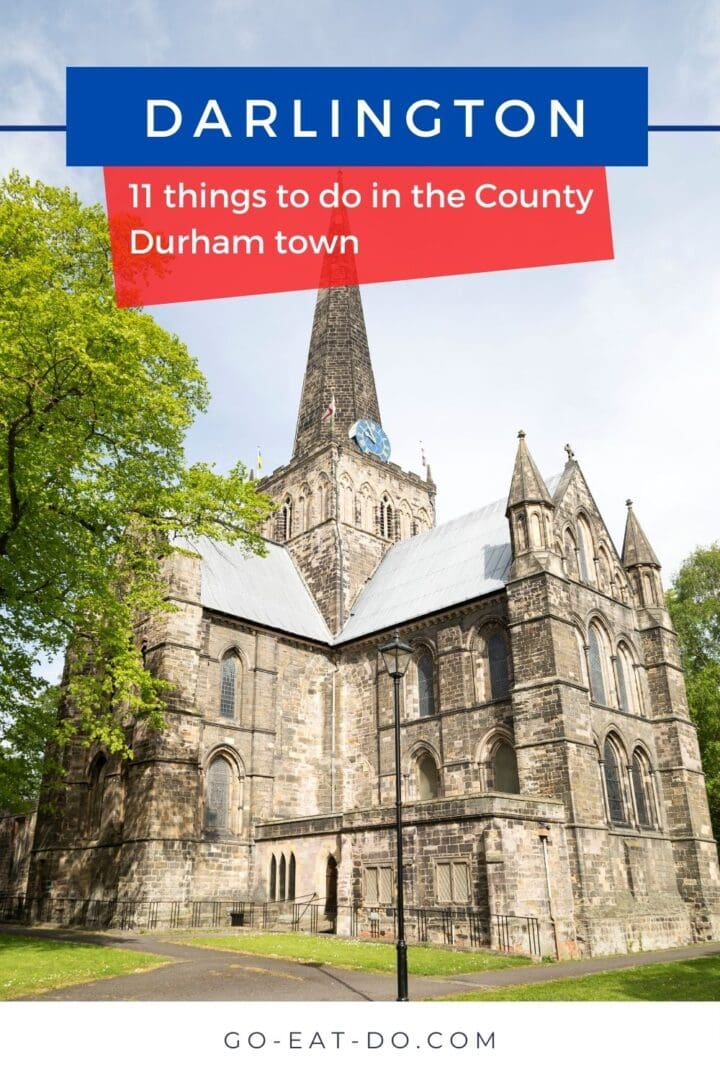Stuart Forster heads to County Durham and suggests 11 things to do in Darlington.
Disclosure: Some of the links below are affiliate links, meaning, at no additional cost to you, I will earn a commission if you click through and make a purchase.
Darlington is famed for its historic links with the railway industry. Famously, the world’s first passenger railway began operating between Darlington and Stockton in 1825. Unsurprisingly, you can find a handful of rail-themed attractions in and around the market town.
Popping into Darlington on a sunny Saturday provided me with positive impressions of the town centre.
Cheerily, a seller of The Big Issue greeted passers-by and wished people a good weekend at the end of Post House Wynd. “Nice hairdo, my darling,” said the vendor to a woman.
I’d already noted that Darlington seemed to have more than its fair share of nail bars and places for people to get their hair cut or styled. Names of hairdressers include Scissors Palace plus Yaeger Hair and Beauty. In Clarks Yard, I spotted Winroths hair salon and the Barbers Shop.
Gourmets may be tempted to visit Clarks Yard because it’s the base of the Little Quaker Distillery and The Cheese and Wine Shop.
Post House Wynd is dotted with attractive-looking boutiques and places to grab a bite, including Number Eight Bakehouse. A handful of Darlington’s streets are called wynds, indicative of them being narrow lanes.
Several of Darlington’s street names end with ‘gate’. Derived from the Old Norse word ‘gata’ meaning road or way, the term is a reminder that Scandinavians settled in the region long ago. Inside St Cuthbert’s Church, there’s a more obvious remnant of their presence around 1,100 years ago.
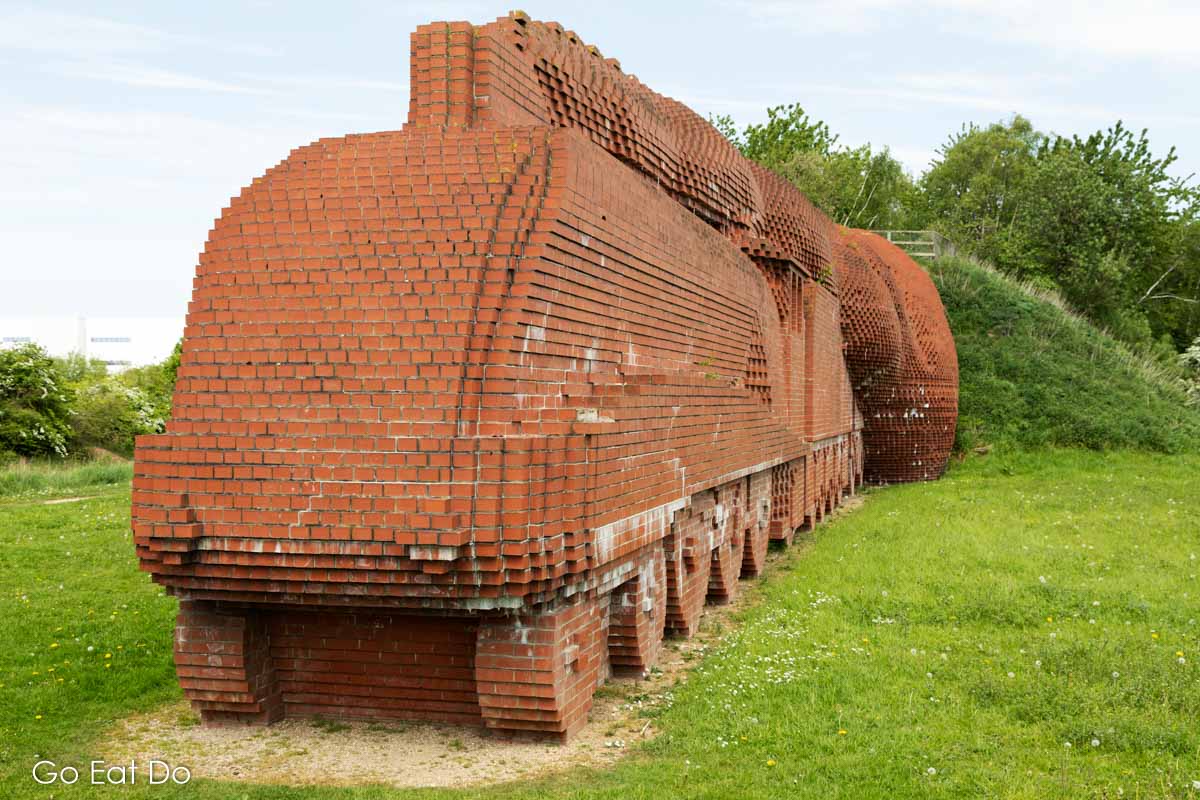
1 – Step inside St Cuthbert’s Church
The River Skerne flows past Darlington’s St Cuthbert’s Church. From Monday and Saturday, between Easter and September, the church opens for visits from 11.00 am to 1.00 pm.
Spare a moment to gaze up at the wood ceiling beams. It is the only church in County Durham to have its original 13th-century roof.
People have worshipped on the site since Anglo-Saxon times. The present building can be traced to around 1180 and was substantially restored in the 1860s.
If you enjoy history take a look at the sedilia, the three stone seats on the south side of the sanctuary. They date from around 1350. You can also see a Danish hog-back tombstone that is well over 1,000 years old.
Inscribed memorial stones are dotted around the church. They include one for Brigadier General Roland Boys Bradford. At the age of 25 he became the British Army’s youngest Brigadier General. Awarded both the Military Cross and Victoria Cross, he was killed at the Battle of Cambrai on 30 November 1917. Three of the four Bradford brothers died during World War One.
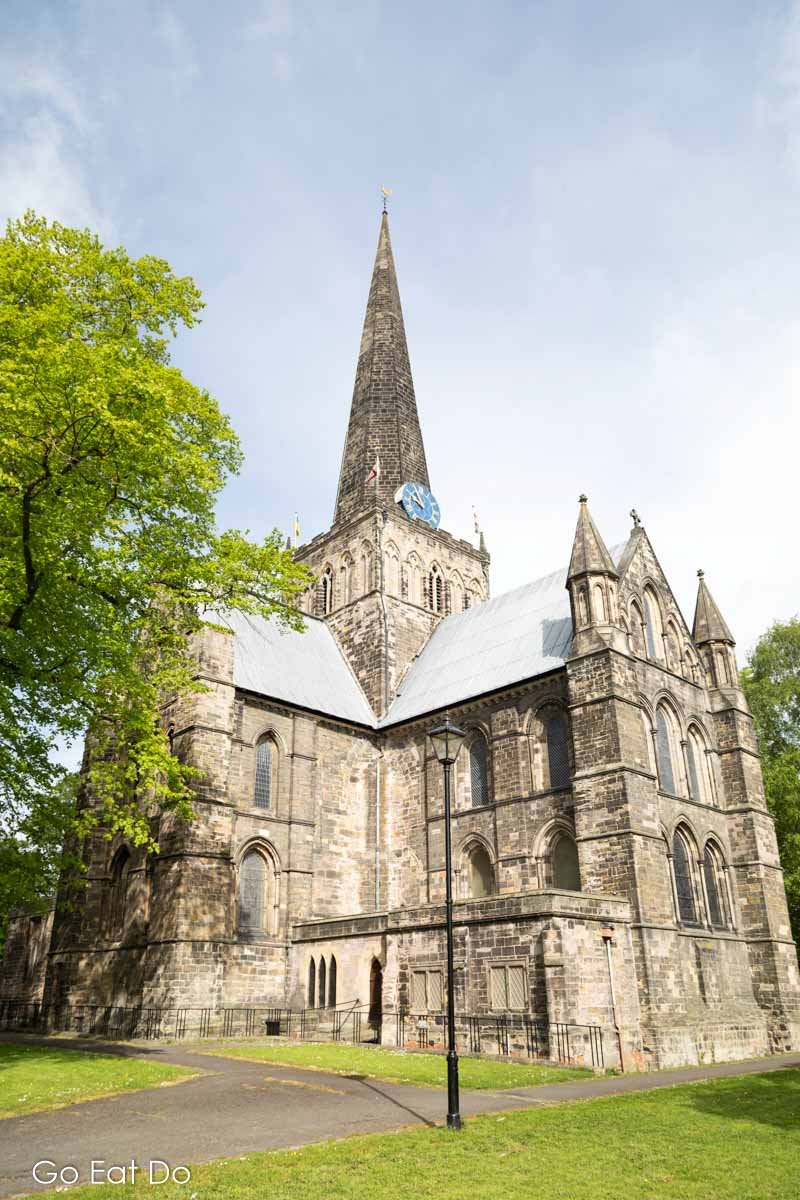
2 – Visit the Head of Steam Darlington Railway Museum
Learn about North East England’s railway heritage at the Head of Steam.
The museum is on premises built as a railway station in 1840. The Victorian booking office, toilets and waiting room feature as part of the family-friendly attraction.
Check the Head of Steam website for details about temporary exhibitions, half-term activities for children and its calendar of events.
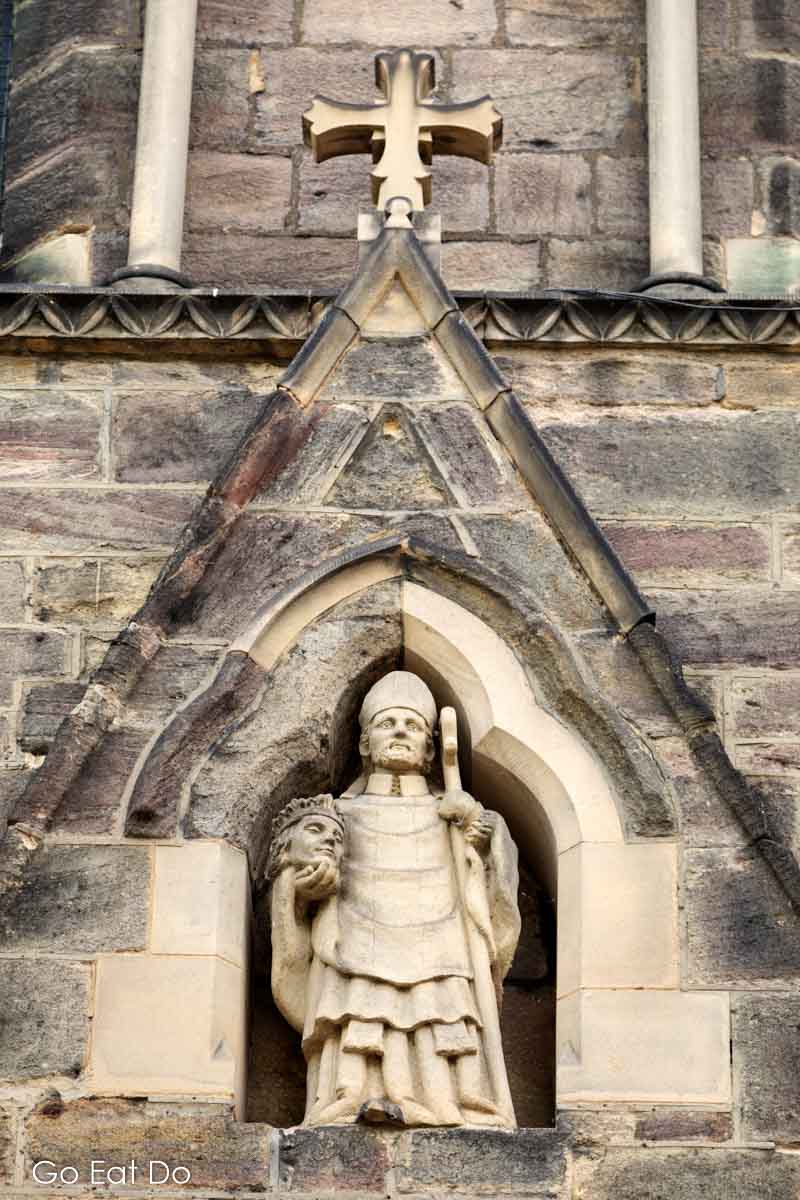
3 – Stroll past Darlington’s original Mechanics’ Institute
Membership of Darlington’s Mechanics’ Institute offered people access to newspapers and a sizable library. It helped working people self-educate and stay informed.
The original building (82 Skinnergate) opened in 1854. It now hosts the Tre Amici Mediterranean restaurant and Ignite nightclub.
The institute is now based in a building on Bondgate.

4 – Pause for lunch in Darlington Covered Market
Darlington’s market hall opened in 1863. It features a Gothic Revival clocktower that rises over the town centre.
Thai and Hungarian-style street food counts among the market hall’s dining options.
The Market Tap serves drinks in the hall, which intermittently hosts events. Live music and quizzes feature on the calendar.
Deli-style food counters serve a range of food suitable for picnics or cooking at home.

5 – View Darlington’s Brick Train sculpture
Brick Train, a sculpture depicting smoke billowing from the speeding Mallard steam locomotive, is on the eastern fringe of Darlington. David Mach created the sculpture in 1997 using 185,000 bricks.
Climb the platform behind the plume of smoke for views over the surrounding area.
A word of warning. You may find that your sat nav directs you along the A66. Brick Train is located next to the dual carriageway but a hedge obscures views from the road. Instead, head to Morrison’s supermarket at Morton Park Industrial Estate, park up then follow the trail that skirts past a small pond to the landmark.
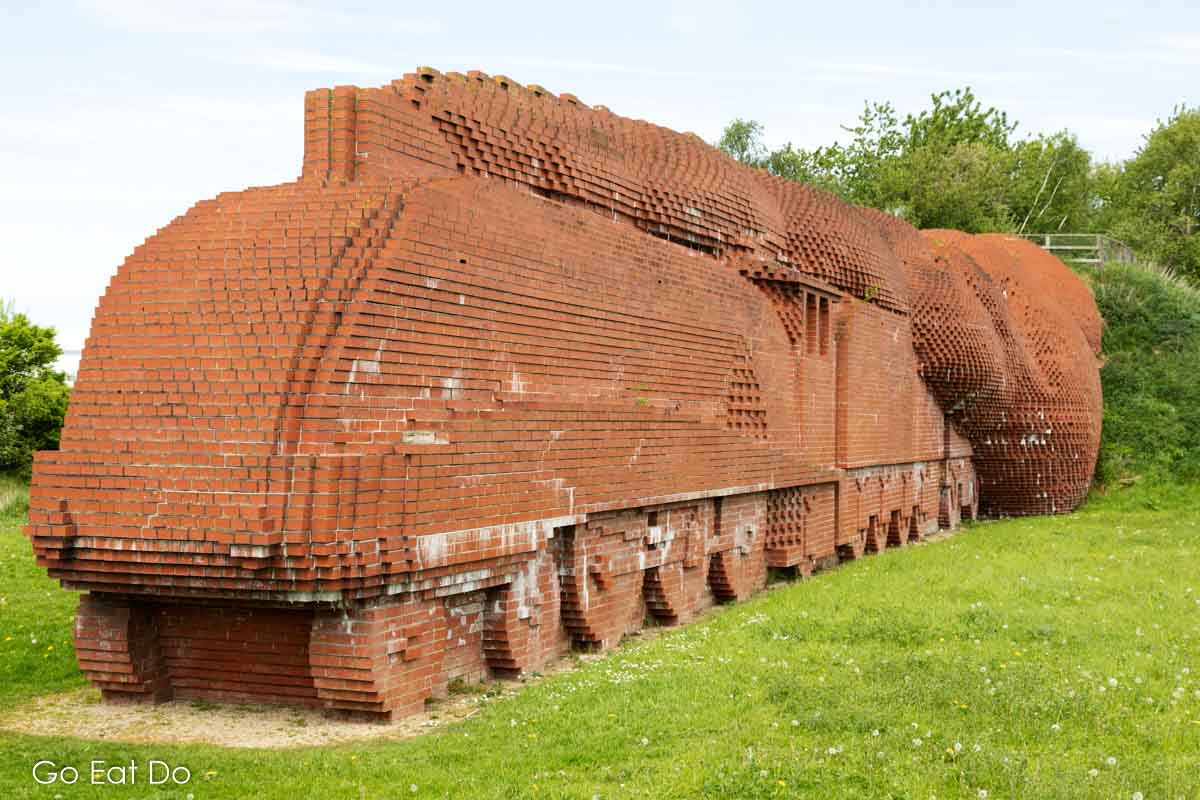
6 – Gaze up at the Durham Ox
The Durham Ox was a powerfully built bull that lived from 1796 to 1807. Shown around the country at fairs, the ox impressed onlookers with its size and shape.
Bred locally, it was a fine example of the Shorthorn breed of cattle.

If the name sounds familiar that may be because many pubs were named after the Durham Ox. Perhaps surprisingly, there isn’t one in Darlington but Northallerton, 16.5 miles down the A167, has a pub called The Durham Ox.
Step off the Horse Market into Bull Wynd and you’ll see a bas-relief stone sculpture of a powerful-looking beast with a raised right front leg.
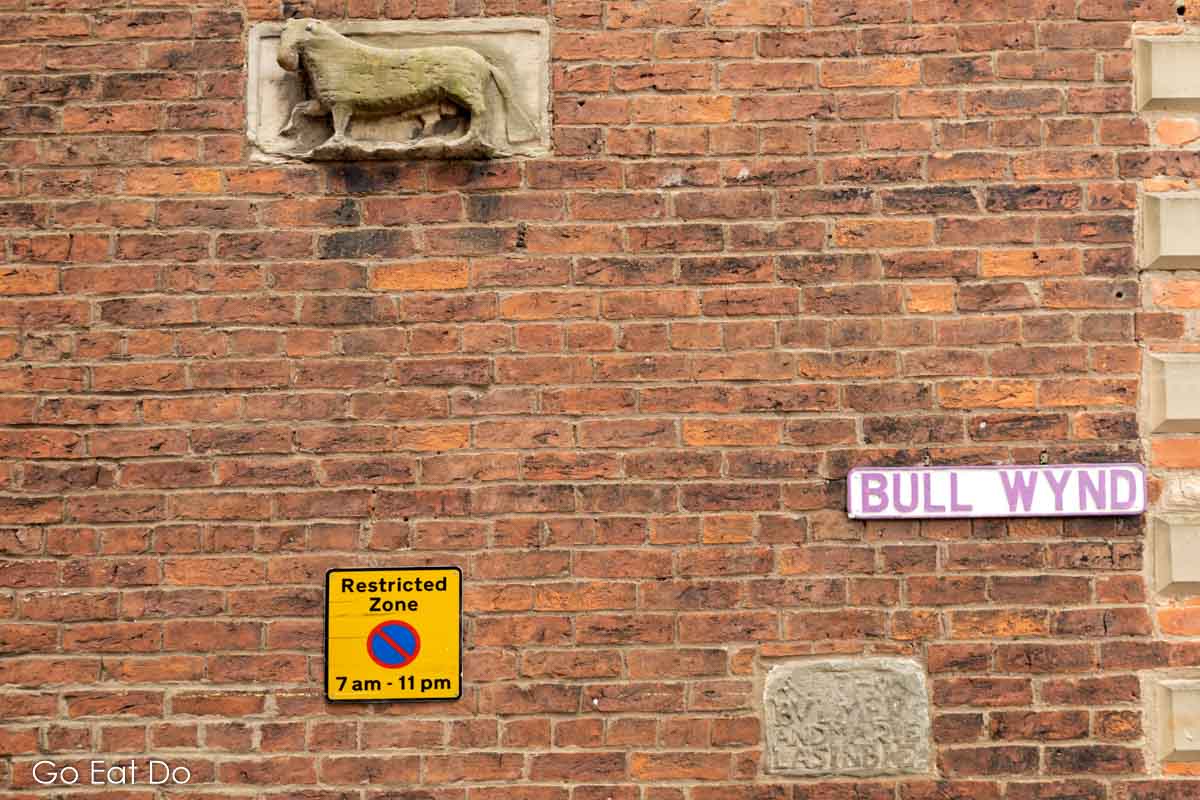
7 – Enjoy a cuppa and a slice of cake
Dotted with cafes and pubs, there are plenty of places to eat and drink in Darlington.
You’ll have no problem staying fed and watered around the Horse Market.
I enjoyed popping into Mrs Palmer’s Pantry (3-5 Bakehouse Hill) for a slice of carrot cake and an Americano. In addition to an elegant tea room, outdoor seating is available on the marketplace with views of the covered market hall.
Prefer a pint? Darlington has a broad choice of pubs. The Orb micropub (28 Coniscliffe Road) has a good reputation for craft beer.
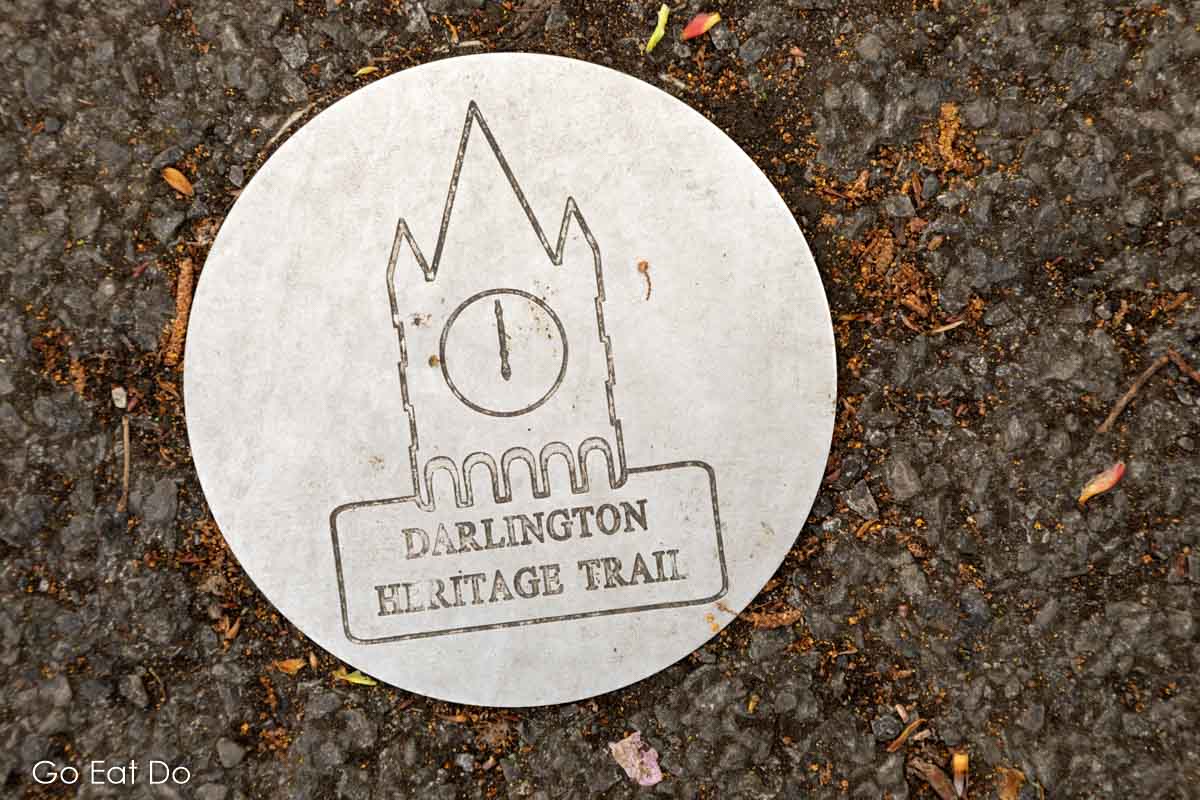
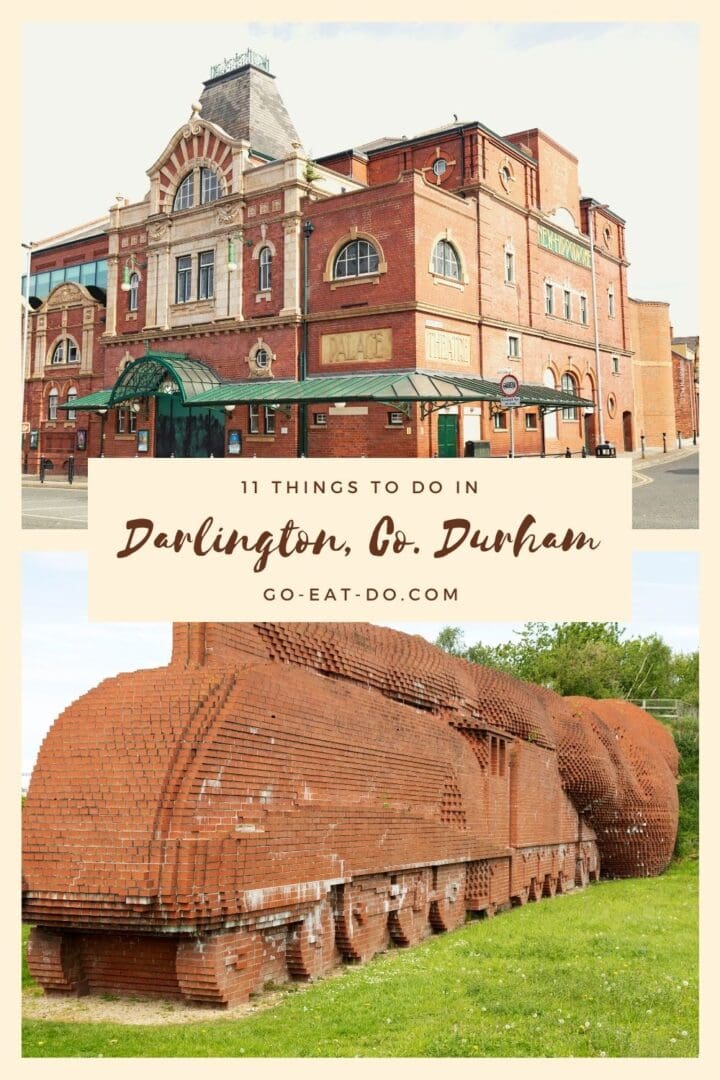
8 – Stroll around Thornton Hall Gardens
Thornton Hall is a couple of miles west of the town centre and dates from around 1550.
The gardens of the manor house were restored in the mid-1990s.
Part of a working farm, the garden opens to the public a handful of days each summer.
9 – See the Quakers play football
Darlington Football Club plays home games at Blackwell Meadows.
The club was founded in 1883. It’s nicknamed ‘the Quakers’ after the Religious Society of Friends, which exerted significant influence on the County Durham town during the Victorian era.
Darlington reached the second tier of English league football a couple of times in the 1920s. For much of its history, the club played in the lower leagues.
In addition to a Quaker hat, the club crest features a depiction of Locomotion No. 1, the steam locomotive designed by George Stephenson.
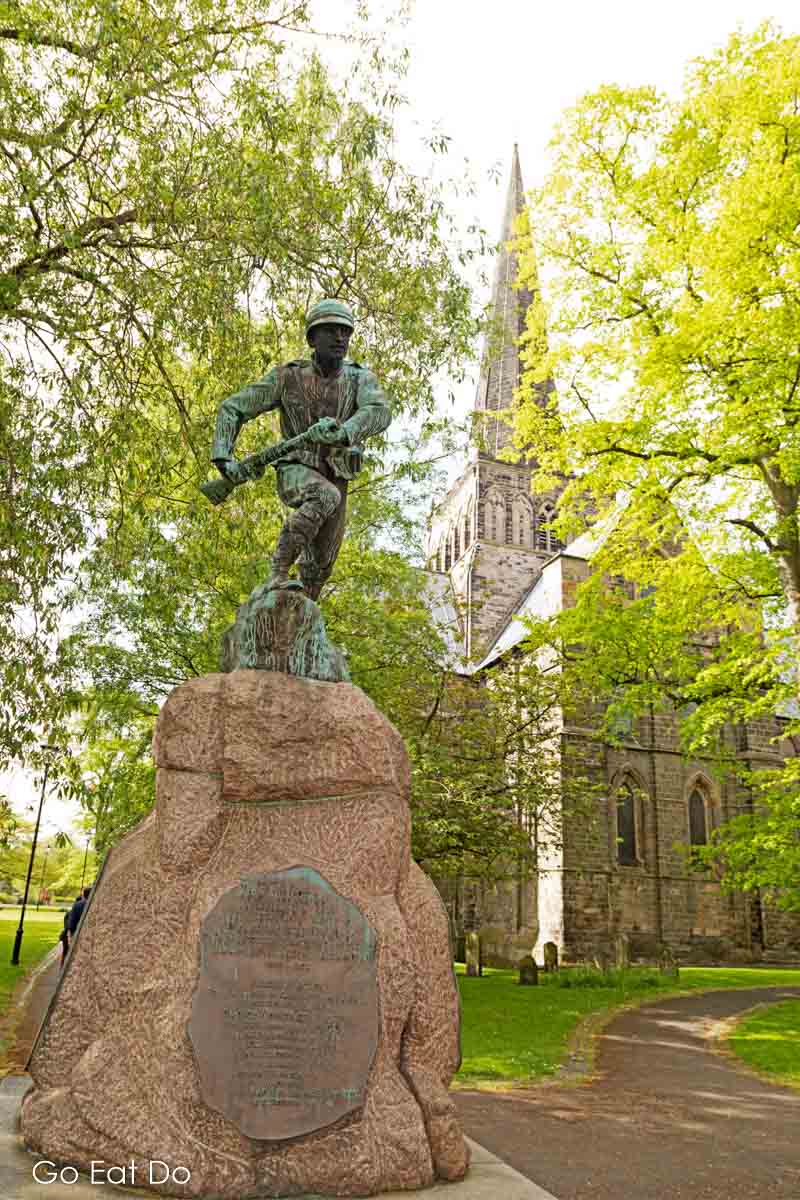
10 – Watch a game of rugby at Mowden Park
Darlington Mowden Park Rugby Football Club plays home fixtures at a 25,500-capacity all-seater stadium on the edge of town.
The Darlington Arena was built for the town’s football club and first hosted games during the 2003-04 season. Darlington FC moved out of the ground following the 2011-12 season.
The stadium also hosts concerts. Paloma Faith and Simply Red count among the acts to play gigs at Mowden Park.
11 – Enjoy a show at Darlington Hippodrome
Darlington Hippodrome is an Edwardian theatre at Parkgate. The entertainment venue opened in 1907.
It features a 150-seat studio theatre as well as a 1,000-seat auditorium.
Not visiting for a show? Step inside the building to visit the Hippo Lounge café.

Things to do near Darlington
Looking for ideas for things to do around Darlington? How about these suggestions:
Visit Locomotion in Shildon, 10 miles northeast of the town. Locomotion is a family-friendly attraction with railway rolling stock and temporary exhibitions. Free-to-visit it’s well worth a trip if you’re interested in the industrial heritage of North East England.
Head to Auckland Palace in Bishop Auckland, 12 miles north of Darlington. The former residence of the Prince-Bishops of Durham opened to the public in 2020. The Mining Art Gallery, Auckland Park and Spanish art gallery also count among the reasons to visit Bishop Auckland. Kynren, an outdoor spectacle telling a tale of England, is held on the edge of town during summertime.
Pop into The Bowes Museum at Barnard Castle, 16 miles west of Darlington. The grand, chateau-style building houses an impressive collection of artworks and decorative arts.
Looking for something more active? Try stand-up paddle boarding, kayaking or other watersports at the Tees Barrage, 13.5 miles east of Darlington.
Piercebridge Roman Fort is five miles northwest of Darlington, by the River Tees.
Stroll along the widest street in England at Stockton-on-Tees, 12 miles east of Darlington.
Enjoy walking? You may enjoy a day walking in County Durham’s Castle Eden Dene.
Did you know…?
There’s a city named Darlington in South Carolina. A handful of places in North East England have American names.
Travel to Darlington
Darlington is easily reachable by rail. The County Durham town is on Britain’s East Coast Main Line, a 2.5-hour rail journey north of London.
The A1(M) runs to the west of the town. Junctions 57 and 58 are closest to Darlington. Signposts point to short- and long-stay parking in the town centre.
Teesside International Airport is eight miles east of Darlington.
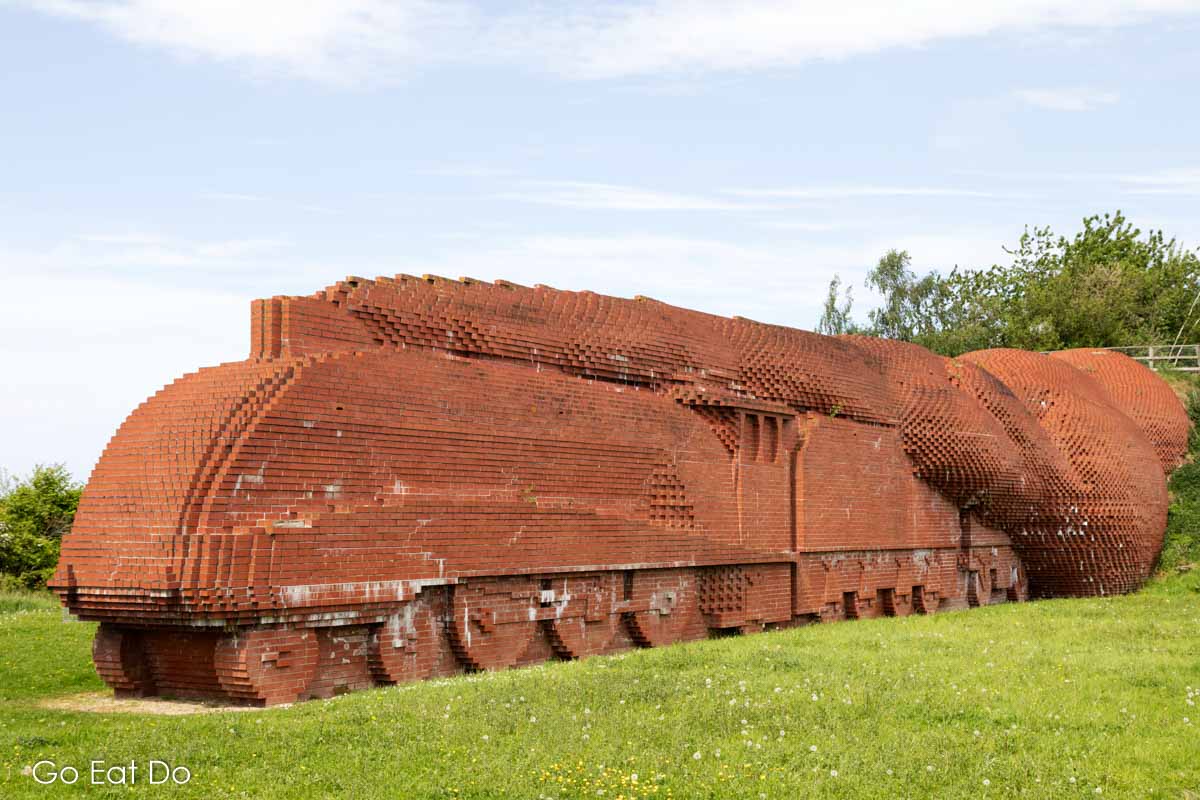
Hotels in Darlington
Search for accommodation in and around Darlington via Booking.com:
Map of Darlington
The Google Map below shows Darlington. Zoom in or out of the map to see the town’s location or view details:
Books about Darlington
Planning to visit Darlington? You can buy the following books via Amazon by clicking on the links or cover photos:
Secret Darlington by Chris Lloyd:

Lloyd is also the author of Darlington in 50 Buildings:

Darlington Through Time by Paul Chrystal:


Cicerone’s Walking in County Durham: 40 walking routes exploring Pennine moors, river valleys and coastal paths:

Further information
Discover more reasons to visit Darlington on the This Is Darlington website. The Visit Tees Valley website also has ideas for places to visit near the County Durham town.
Stuart Forster is an award-winning freelance travel writer from North East England. His work has been published in National Geographic Traveller, BBC Good Food and Wanderlust magazine.
Photos illustrating this post are by Why Eye Photography.
Thanks for visiting Go Eat Do and reading this post about things to do in Darlington. You may be interested in visiting the region during the Lumiere Durham festival of lights.
If you enjoyed this post why not sign up for the free Go Eat Do newsletter? It’s a hassle-free way of getting links to posts on a monthly basis.
‘Like’ the Go Eat Do Facebook page to see more photos and content.
